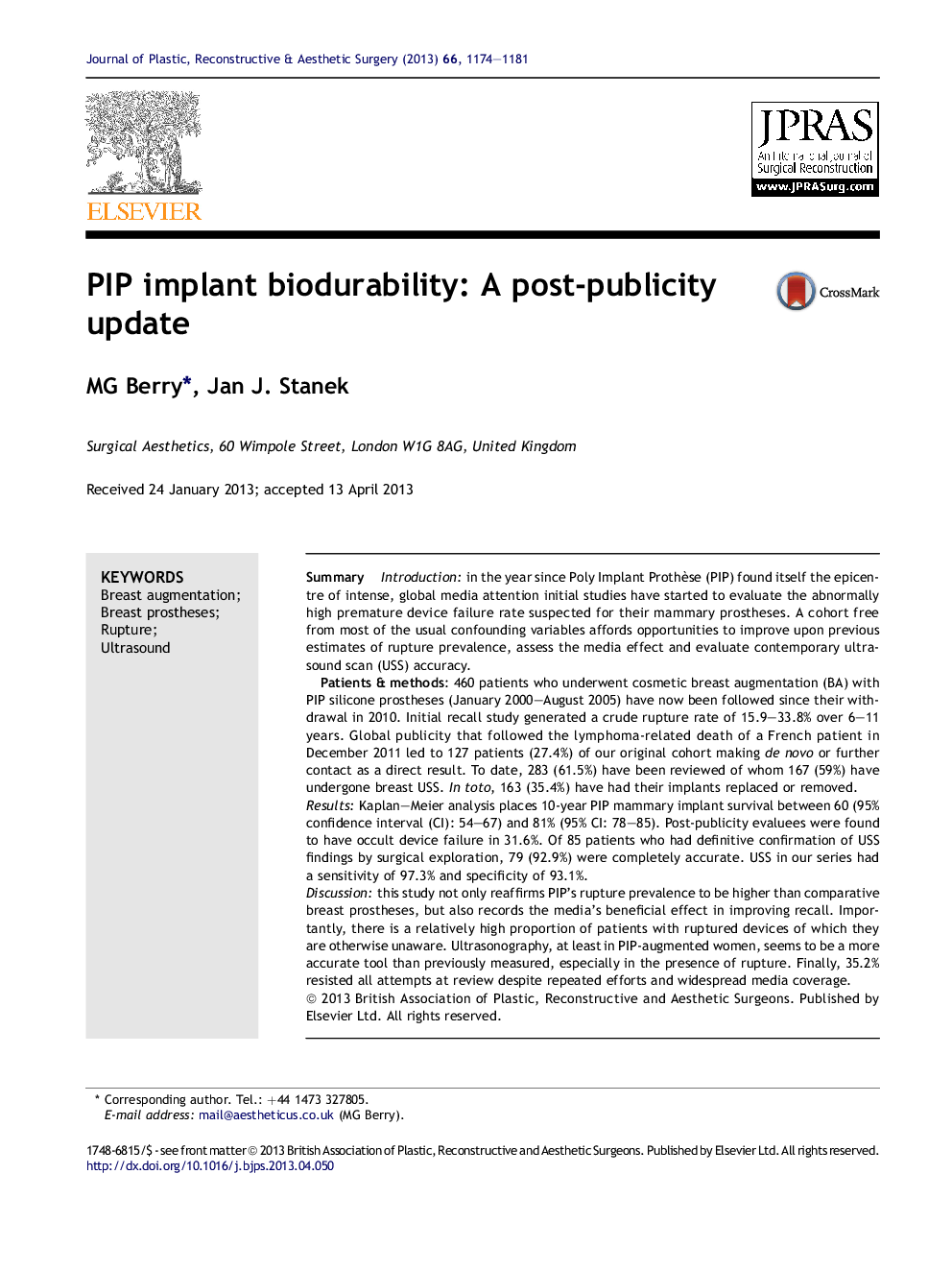| Article ID | Journal | Published Year | Pages | File Type |
|---|---|---|---|---|
| 4118366 | Journal of Plastic, Reconstructive & Aesthetic Surgery | 2013 | 8 Pages |
SummaryIntroductionin the year since Poly Implant Prothèse (PIP) found itself the epicentre of intense, global media attention initial studies have started to evaluate the abnormally high premature device failure rate suspected for their mammary prostheses. A cohort free from most of the usual confounding variables affords opportunities to improve upon previous estimates of rupture prevalence, assess the media effect and evaluate contemporary ultrasound scan (USS) accuracy.Patients & methods: 460 patients who underwent cosmetic breast augmentation (BA) with PIP silicone prostheses (January 2000–August 2005) have now been followed since their withdrawal in 2010. Initial recall study generated a crude rupture rate of 15.9–33.8% over 6–11 years. Global publicity that followed the lymphoma-related death of a French patient in December 2011 led to 127 patients (27.4%) of our original cohort making de novo or further contact as a direct result. To date, 283 (61.5%) have been reviewed of whom 167 (59%) have undergone breast USS. In toto, 163 (35.4%) have had their implants replaced or removed.ResultsKaplan–Meier analysis places 10-year PIP mammary implant survival between 60 (95% confidence interval (CI): 54–67) and 81% (95% CI: 78–85). Post-publicity evaluees were found to have occult device failure in 31.6%. Of 85 patients who had definitive confirmation of USS findings by surgical exploration, 79 (92.9%) were completely accurate. USS in our series had a sensitivity of 97.3% and specificity of 93.1%.Discussionthis study not only reaffirms PIP's rupture prevalence to be higher than comparative breast prostheses, but also records the media's beneficial effect in improving recall. Importantly, there is a relatively high proportion of patients with ruptured devices of which they are otherwise unaware. Ultrasonography, at least in PIP-augmented women, seems to be a more accurate tool than previously measured, especially in the presence of rupture. Finally, 35.2% resisted all attempts at review despite repeated efforts and widespread media coverage.
